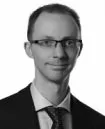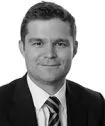Lorna Grace Peires v. Bickerton Aerodromes Ltd [2016] EWHC 560 (Ch)
Background
The claimant owned a property near to the defendant's aerodrome. One of the activities at the aerodrome was the taking off and landing of helicopters during training exercises (the Activity). The claimant alleged the defendant was liable for causing a private nuisance due to the noise of the Activity.
Issues considered by the court
The court considered the parties' stance on the nature and frequency of the noise of the Activity, which were unsurprisingly polarised: the claimant argued that the noise of the Activity was excessive and unreasonable. The defendant argued that the noise of the Activity was neither excessive nor unreasonable and no worse than other operations at the aerodrome.
The court grappled with the law (arguably with mixed results) on the acquisition of a right to commit a nuisance by prescription. The defendant argued that, as helicopter activity had commenced at the aerodrome in the early 1960s, it had acquired a prescriptive right to carry on the Activity.
The court also considered whether the defendant's activities were not a nuisance because they were not liable for the actions of their licensees (the helicopter pilots) and/or within limited statutory defences provided by, amongst other legislation, the Civil Aviation Act 1982.
Decision:
Peter Smith J granted an injunction in favour of the claimant to regulate the future operation of the Activity. He considered it was an unreasonable nuisance and an unreasonable interference with the claimant's use of her property.
Reasoning:
Peter Smith J acknowledged that in certain circumstances the right to make a noise nuisance can be established by prescription. His judgment identified three difficulties in his view to establishing such a right:
- the defendant has to show 20 years' continuous use, which can only begin when the noise amounts to a nuisance;
- how to establish the precise extent of the right to cause a noise nuisance which has actually been acquired;
- how much more noise (if any) can be emitted pursuant to the claimed right than had been emitted in the 20-year use.
Peter Smith J rejected the claim that the defendant had acquired a prescriptive right to cause a noise nuisance as (i) the Activity had been carried on despite protests and therefore an easement cannot have been acquired as it would have been established by force and (ii) it had provided no evidence about the extent of noise created by the Activity before 2014 and therefore had not shown what would be the defined level of noise that falls within the claimed right.
The court followed Coventry v. Lawrence and dismissed the argument that the defendant was not liable for the noise caused by the activity of its licensees as it directly sanctioned the activity. All statutory defences were also dismissed as inapplicable to the facts of this case.
Points to consider:
- Further judgments are welcomed to gauge whether Coventry v. Lawrence will represent the high watermark of the principle that a party can acquire a prescriptive right to cause a noise nuisance.
- There appears to be further scope for the further development of the law on the acquisition of an easement to perpetrate a noise nuisance. The judgment arguably marks a departure from Lord Neuberger's approach in Coventry when assessing this issue alongside the balancing exercise between (i) the right of a person to the undisturbed nature of its property against (ii) the right of a person to use its own property for its own lawful enjoyment.
- If parties are going to allege they have acquired a prescriptive right to cause a noise nuisance, they will have to think carefully about how they formulate their evidence on (i) when the nuisance allegedly began and (ii) the precise nature of the easement that it is seeking to establish.
- Parties must engage with objections about alleged noise nuisance even if the activity has been carried on for a number of years as easements cannot be established by force.
- Parties should consider whether the nature of the noise changed and, if so, the impact on their position. Peter Smith J commented that helicopters in flight in the 1960s differ markedly from those in flight today.
- Besides the threat of injunctions, a noise emitter may also be liable for substantial damages to reflect the capital diminution in value of neighbouring properties as a result of the noise nuisance.
Dentons is the world's first polycentric global law firm. A top 20 firm on the Acritas 2015 Global Elite Brand Index, the Firm is committed to challenging the status quo in delivering consistent and uncompromising quality and value in new and inventive ways. Driven to provide clients a competitive edge, and connected to the communities where its clients want to do business, Dentons knows that understanding local cultures is crucial to successfully completing a deal, resolving a dispute or solving a business challenge. Now the world's largest law firm, Dentons' global team builds agile, tailored solutions to meet the local, national and global needs of private and public clients of any size in more than 125 locations serving 50-plus countries. www.dentons.com.
The content of this article is intended to provide a general guide to the subject matter. Specialist advice should be sought about your specific circumstances.


